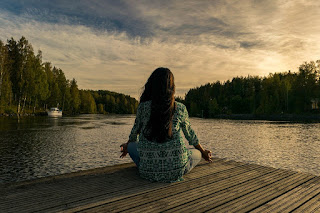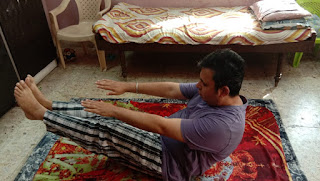Kumbhaka (Breath Retention) – Its Technique, Advantages and Precautions
 |
| Kumbhaka (Breath Retention) – Its Technique, Advantages and Precautions |
Kumbhaka is retention of breath in hatha yoga practice of
Pranayama. When you inhale and then hold the breath it is called Antara Kumbhaka.
When you exhale and then hold the breath, it is called as Bahya Kumbhaka.
How to do Kumbhaka
·
Sit in a cross legged or lotus position.
·
Inahle through nose fully. Hold the breath for 6
seconds.
·
Exhale. Now again hold for 6 seconds.
Increase the holdig of breath for 1 second every day. Goal
is to reach the maximum of 32 seconds breath hold.
Advantages of Kumbhaka (Breath Retention)
·
Holding the breath allows larger quantities of
oxygen and Prana to be stored.
·
It establishes equiblibrinm of our positive and
negative energies. Our physical and mental states come into perfect harmony.
·
It acts effectively on the respiratory organs,
digestion, circulation and nervous system.
·
It helps to avoid problems affecting lungs,
liver, gall bladder, stomach and heart.
·
It helps to maintain good health and vital forces.
It accounts for the development of will power.
·
Holding the breath increases capacity of lungs
as it increases pressure inside them and gives them time to fully expand.
Precautions
·
One should not experience any kind of feeling of
suffocation while holding the breath.
·
One should be able to breathe normally without
slightest effort, once the exercise is over.
·
Normal person should not hold the breath for
more than 32 seconds. If you want to hold more, do it in guidance of Yoga
expert.
·
Those who suffer from illnesses affecting the
heart or lungs should refrain from performing this exercise.



Comments
Post a Comment